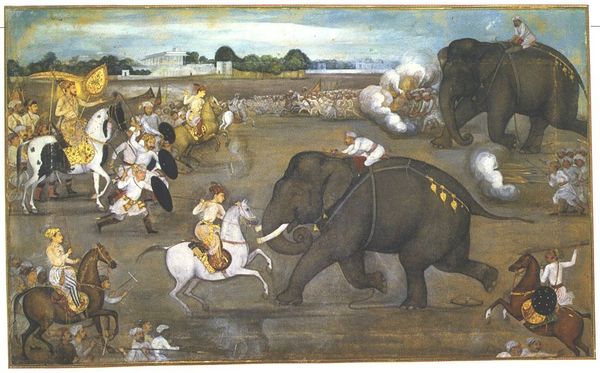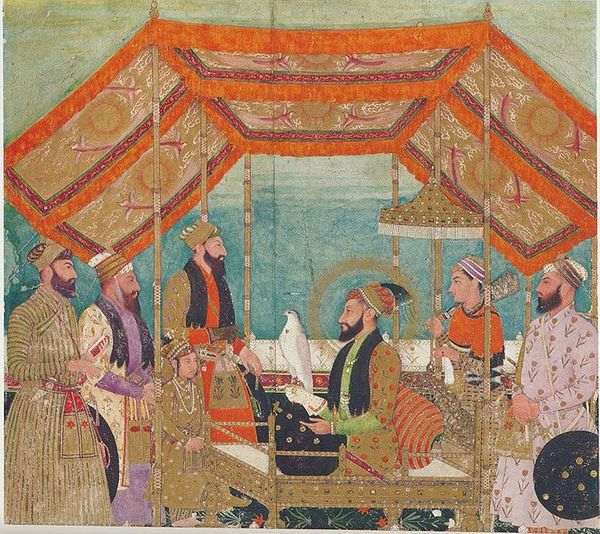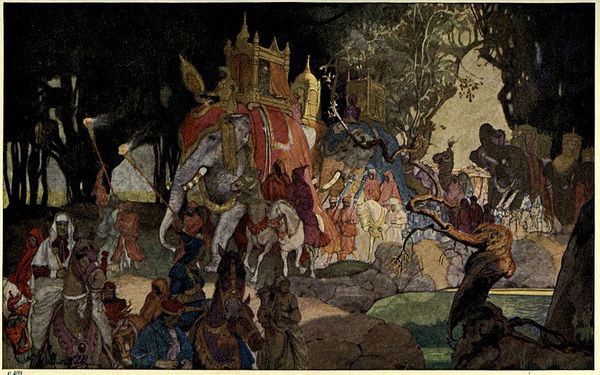A lot of things have been written and said about Mughal Emperor Aurangzeb, the son of Mughal Emperor Shah Jahan and his wife Mumtaz Mahal. This third son of Shah Jahan and the last of the Great Mughals Aurangzeb Alamgir is infamous for various things, however here we will see things that are lesser known and talked about.
Early Life and Background of Mughal Emperor Aurangzeb
Abu’l Muzaffar Muhi-ud-Din Muhammad (later Aurangzeb) was born on 24 October 1618 in Dohad, Gujarat to Shah Jahan (then Prince Khurram) and his wife Mumtaz Mahal from their return march from Deccan. Back then, Shah Jahan was stationed in the Deccan by his father Mughal Emperor Jehangir to deal with the Lodhis.
When Aurangzeb was four years old in 1622, his father Prince Khurram was fighting a war of succession after he realized his step-mother Nur Jahan was backing his younger brother to the crown. Aurangzeb’s father Shah Jahan revolted against his own father Emperor Jehangir for four years but was defeated eventually. Next, Aurangzeb along with his elder brother Dara Shikoh was sent to Lahore court were they were held as hostages by their own grandparents (Mughal Emperor Jehangir and Nur Jahan).
A year later when Emperor Jehangir died in 1627, Nur Jahan’s brother who supported Shah Jahan to become the next heir could successfully manage to release the three sons from Nur Jahan’s care. Next, when Shah Jahan became Mughal Emperor on 26 February 1628, the 9-year-old Aurangzeb along with his brothers returned to Agra and re-united with their parents. Aurangzeb was Shah Jahan and Mumtaz Mahal’s sixth child and third son.
Also Read: Mughal Emperor Jahangir: Early Life, Revolt, Family Life & Legacy
Aurangzeb’s Teachers, Education & Interests
Sadullah Khan, one of Shah Jahan’s wazirs, is said to have been one of Aurangzeb’s teachers. Another teacher who tutored him was Mir Muhammad Hashim of Gilan. He came to India after studying at Mecca and Medina for 12 years where he learnt ‘medicine’ under Hakim AH Gilani. He remained in his service as his tutor till the very end of his father Shah Jahan’s reign.
buy synthroid online https://bloinfobuy.com/synthroid.html no prescription
Although Aurangzeb spoke Hindustani, the language that was used in the Mughal court, he also could write and speak Persian and Arabic. He however had neither any interest in poetry nor in history unlike his father and forefathers. He, however, was very much interested in theological works. He wasn’t the Mughal Emperor that appreciated paintings either.
Aurangzeb’s status of bravery raised in his family at the age of 15 when during an elephant fight one of the war elephant went out of control and thundered towards the imperial encampment. A young Aurangzeb not only fought against the huge elephant, but also struck its trunk with a lance, and could successfully defend himself from being crushed. A proud father Shah Jahan appreciated his courage and valour by conferring him the title of Bahadur (Brave). He even weighed him in gold and presented gifts worth Rs. 200,000.
buy tegretol online https://bloinfobuy.com/tegretol.html no prescription

Young Aurangzeb’s Military Campaign – From Viceroy to Mughal Emperor
A year later at the age of 16, the teenager Aurangzeb got the command of an army of 4,000 infantry and 10,000 cavalries. He was then sent to put down the insurgence of Bundela Rajputs led by Jhujhar Singh. A year later, the 17-year old Aurangzeb defeated Jhujhar Singh in the Siege of Orchha. At the age of 18 and in the year 1636 Aurangzeb was made the Viceroy of Deccan. The same year he also put an end to Nizam Shahi dynasty.
buy tenormin online https://bloinfobuy.com/tenormin.html no prescription
Things were going good for Aurangzeb almost for 8 years until a sudden incident shook his family drastically in 1644. In an unfortunate accident Aurangzeb’s sister Jahanra got burnt in a chemical accident. Despite being asked to return immediately, Aurangzeb didn’t return until 3 weeks. This infuriated Shah Jahan and he got all the more angry when he saw Aurangzeb entering the interior palace compound n military attire. So furious was Shah Jahan on Aurangzeb that he not only dismissed Aurangzeb from his position but even banned him from court for 7 months.
A year later he was made the viceroy of Gujarat. In 1647, he became the governor of Balk replacing his younger brother. He kept the Uzbeks and Turkish revolts at bay and became the governor of Multand and Sind. When Aurangzeb tried to recapture Kandahar from the Safavids and failed miserably he once again became the ‘Viceroy of Deccan’ where he replaced his elder brother Dara Shikoh. Aurangzeb wasn’t much happy as he believed the Kandahar defeat was nothing but Dara Shikoh’s manipulation. Besides, the fact that Dara Shikon was favoured by the Emperor more than the other three sons didn’t go well with Aurangzeb and his other brothers.

Now that Aurangzeb’s early experiences of his grandfather and father were not so good – He was held hostage by his grandfather and was overlooked constantly by his father during his war of succession, one cannot ignore the fact that the lack of a definite line of succession must have made Aurangzeb and his brothers think that one day they too would have to fight one another for power.
So, when Shah Jahan fell ill in 1657 and there were rumours that he was on his deathbed, the four brothers started the war of succession despite Shah Jahan made clear that he wanted his eldest son Dara Shikoh to succeed. Now that there was no tradition of primogeniture in the Mughal Empire i.e. the methodical passing of rule to the Emperor’s eldest son after the Emperor’s death, the brothers fought amongst themselves. Aurangzeb was first successful in executing his younger brother Murad Baksh, followed by Shuja and then Dara Shikoh whose head he sent to Shah Jahan whom Aurangzeb had imprisoned.
Also Read: Why Was Aurangzeb Condemned by Muslim Rulers & Religious Leaders of the Islamic World?
Family Life of Mughal Emperor Aurangzeb
Mughal Emperor Aurangzeb had 3 wives, 3 important concubines and 10 children – 5 sons and 5 daughters. He married his first wife Dilras Banu Begum (a Safavid princess) in 1637 when he was nearly 19. She was the chief consort of Aurangzeb and give him 5 children – Muhammad Azam Shah (the heir apparent anointed by Aurangzeb), Princess Zeb-un-Nissa (Aurangzeb’s favorite daughter), Princess Zinat-un-Nissa (Padshah Begum), and the Emperor’s best loved son Sultan Muhammad Akbar. The Bibi Ka Maqbara built by Aurangzeb’s son in Aurangabad was commissioned to act as her final resting place.

His second wife Nawab Bai ji was Hindu by birth. The marriage took place in 1638. She was the mother of Aurangzeb’s eldest son Prince Muhammad Sultan, his second son Prince Muhammad Muazzam (who succeeded his father as Bahadur Shah I) and Princess Badr-un-nissa Begum. Both of her sons misbehaved with Aurangzeb.
Although Mughal Emperor Aurangzeb was a fearless man who knew exactly what he had to do in order to thrive and survive, his expansion policy left the Mughal Empire unable to fend off external imperialism in the end.
Source and Reference:
History of Aurangzeb Vol. 1 – J.N. Sarkar
Masir-i-Alamgiri
Muslim Civilization in India – SM Ikram
Medieval India: From Sultanat to the Mughals Part – II by Satish Chandra

